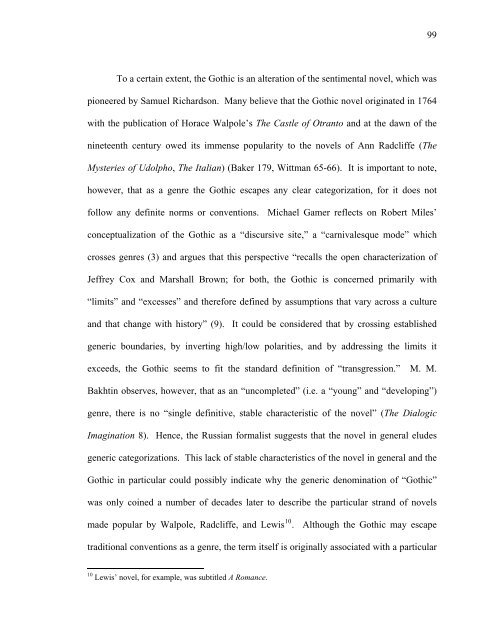Untitled - Sexey's School Moodle
Untitled - Sexey's School Moodle
Untitled - Sexey's School Moodle
Create successful ePaper yourself
Turn your PDF publications into a flip-book with our unique Google optimized e-Paper software.
To a certain extent, the Gothic is an alteration of the sentimental novel, which was<br />
pioneered by Samuel Richardson. Many believe that the Gothic novel originated in 1764<br />
with the publication of Horace Walpole’s The Castle of Otranto and at the dawn of the<br />
nineteenth century owed its immense popularity to the novels of Ann Radcliffe (The<br />
Mysteries of Udolpho, The Italian) (Baker 179, Wittman 65-66). It is important to note,<br />
however, that as a genre the Gothic escapes any clear categorization, for it does not<br />
follow any definite norms or conventions. Michael Gamer reflects on Robert Miles’<br />
conceptualization of the Gothic as a “discursive site,” a “carnivalesque mode” which<br />
crosses genres (3) and argues that this perspective “recalls the open characterization of<br />
Jeffrey Cox and Marshall Brown; for both, the Gothic is concerned primarily with<br />
“limits” and “excesses” and therefore defined by assumptions that vary across a culture<br />
and that change with history” (9). It could be considered that by crossing established<br />
generic boundaries, by inverting high/low polarities, and by addressing the limits it<br />
exceeds, the Gothic seems to fit the standard definition of “transgression.” M. M.<br />
Bakhtin observes, however, that as an “uncompleted” (i.e. a “young” and “developing”)<br />
genre, there is no “single definitive, stable characteristic of the novel” (The Dialogic<br />
Imagination 8). Hence, the Russian formalist suggests that the novel in general eludes<br />
generic categorizations. This lack of stable characteristics of the novel in general and the<br />
Gothic in particular could possibly indicate why the generic denomination of “Gothic”<br />
was only coined a number of decades later to describe the particular strand of novels<br />
made popular by Walpole, Radcliffe, and Lewis 10 . Although the Gothic may escape<br />
traditional conventions as a genre, the term itself is originally associated with a particular<br />
10 Lewis’ novel, for example, was subtitled A Romance.<br />
99



